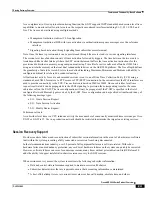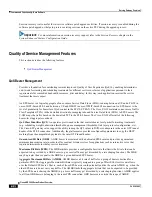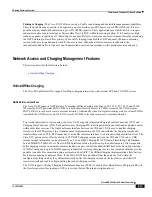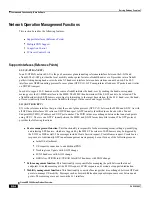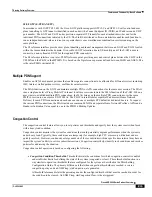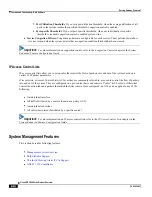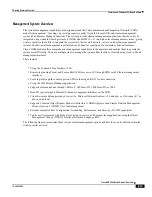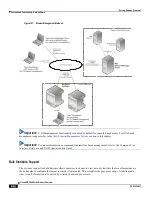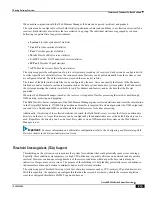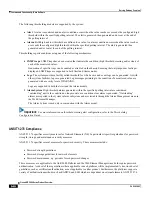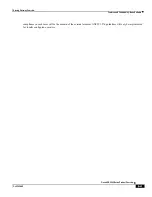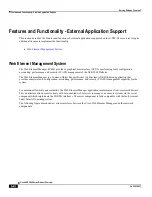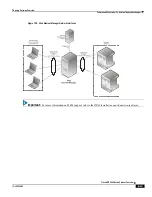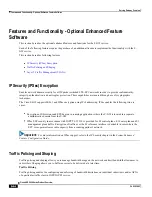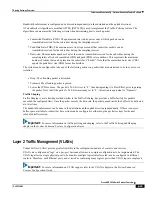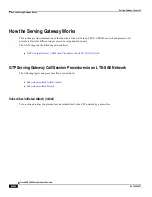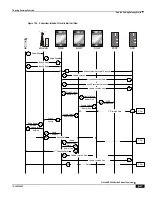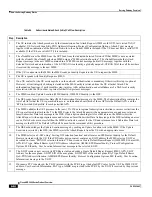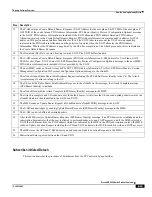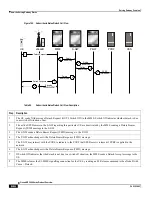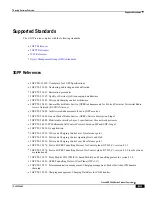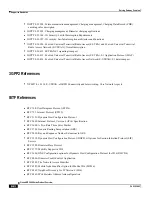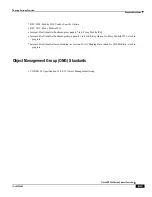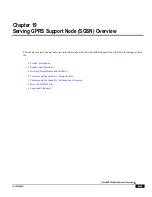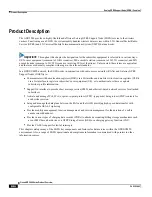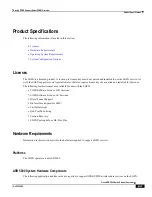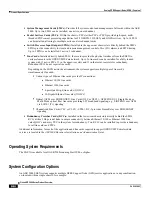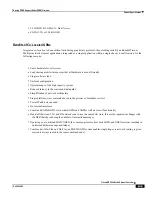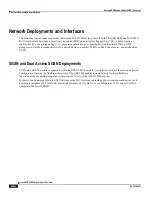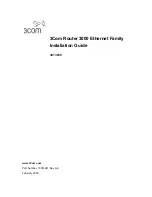
Serving Gateway Overview
Features and Functionality - Optional Enhanced Feature Software ▀
Cisco ASR 5000 Series Product Overview ▄
OL-22938-02
Bandwidth enforcement is configured and enforced independently on the downlink and the uplink directions.
A Token Bucket Algorithm (a modified trTCM) [RFC2698] is used to implement the Traffic-Policing feature. The
algorithm used measures the following criteria when determining how to mark a packet:
Committed Data Rate (CDR): The guaranteed rate (in bits per second) at which packets can be
transmitted/received for the subscriber during the sampling interval.
Peak Data Rate (PDR): The maximum rate (in bits per second) that subscriber packets can be
transmitted/received for the subscriber during the sampling interval.
Burst-size: The maximum number of bytes that can be transmitted/received for the subscriber during the
sampling interval for both committed (CBS) and peak (PBS) rate conditions. This represents the maximum
number of tokens that can be placed in the subscriber‘s ―bucket‖. Note that the committed burst size (CBS)
equals the peak burst size (PBS) for each subscriber.
The system can be configured to take any of the following actions on packets that are determined to be in excess or in
violation:
Drop: The offending packet is discarded.
Transmit: The offending packet is passed.
Lower the IP Precedence: The packet‘s ToS bit is set to ―0‖, thus downgrading it to Best Effort, prior to passing
the packet. Note that if the packet‘s ToS bit was already set to ―0‖, this action is equivalent to ―Transmit‖.
Traffic Shaping
Traffic Shaping is a rate limiting method similar to the Traffic Policing, but provides a buffer facility for packets
exceeded the configured limit. Once the packet exceeds the data-rate, the packet queued inside the buffer to be delivered
at a later time.
The bandwidth enforcement can be done in the downlink and the uplink direction independently. If there is no more
buffer space available for subscriber data system can be configured to either drop the packets or kept for the next
scheduled traffic session.
Important:
For more information on traffic policing and shaping, refer to the Traffic Policing and Shaping
chapter in the
System Enhanced Feature Configuration Guide
.
Layer 2 Traffic Management (VLANs)
Virtual LANs (VLANs) provide greater flexibility in the configuration and use of contexts and services.
VLANs are configured as ―tags‖ on a per-port basis and allow more complex configurations to be implemented. The
VLAN tag allows a single physical port to be bound to multiple logical interfaces that can be configured in different
contexts. Therefore, each Ethernet port can be viewed as containing many logical ports when VLAN tags are employed.
Important:
For more information on VLAN support, refer to the VLANs chapter in the
System Enhanced
Feature Configuration Guide
.
Summary of Contents for ASR 5000 Series
Page 1: ......
Page 26: ......
Page 48: ...New In Release 10 0 SCM Features Cisco ASR 5000 Series Product Overview OL 22938 02 ...
Page 50: ......
Page 58: ......
Page 68: ......
Page 126: ......
Page 138: ......
Page 146: ......
Page 218: ......
Page 236: ......
Page 356: ......
Page 374: ......
Page 422: ......
Page 496: ......
Page 572: ......
Page 654: ......
Page 700: ......
Page 726: ......
Page 784: ......
Page 816: ......
Page 844: ......
Page 906: ......
Page 926: ......
Page 942: ......
Page 943: ...Cisco ASR 5000 Series Product Overview OL 22938 02 Chapter 30 Technical Specifications ...
Page 966: ......
Page 972: ......

